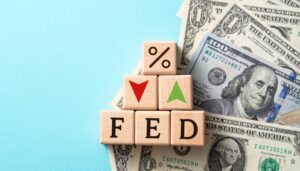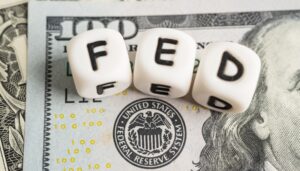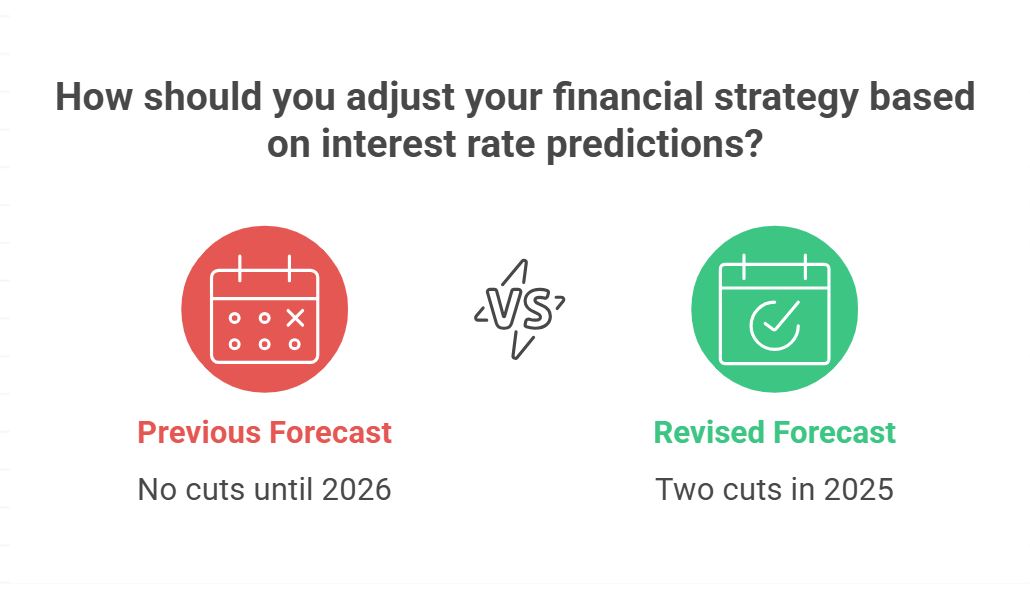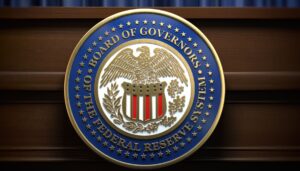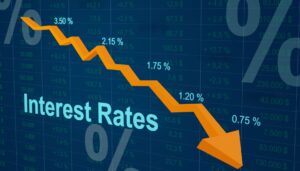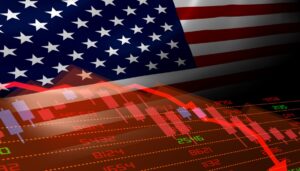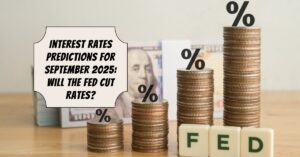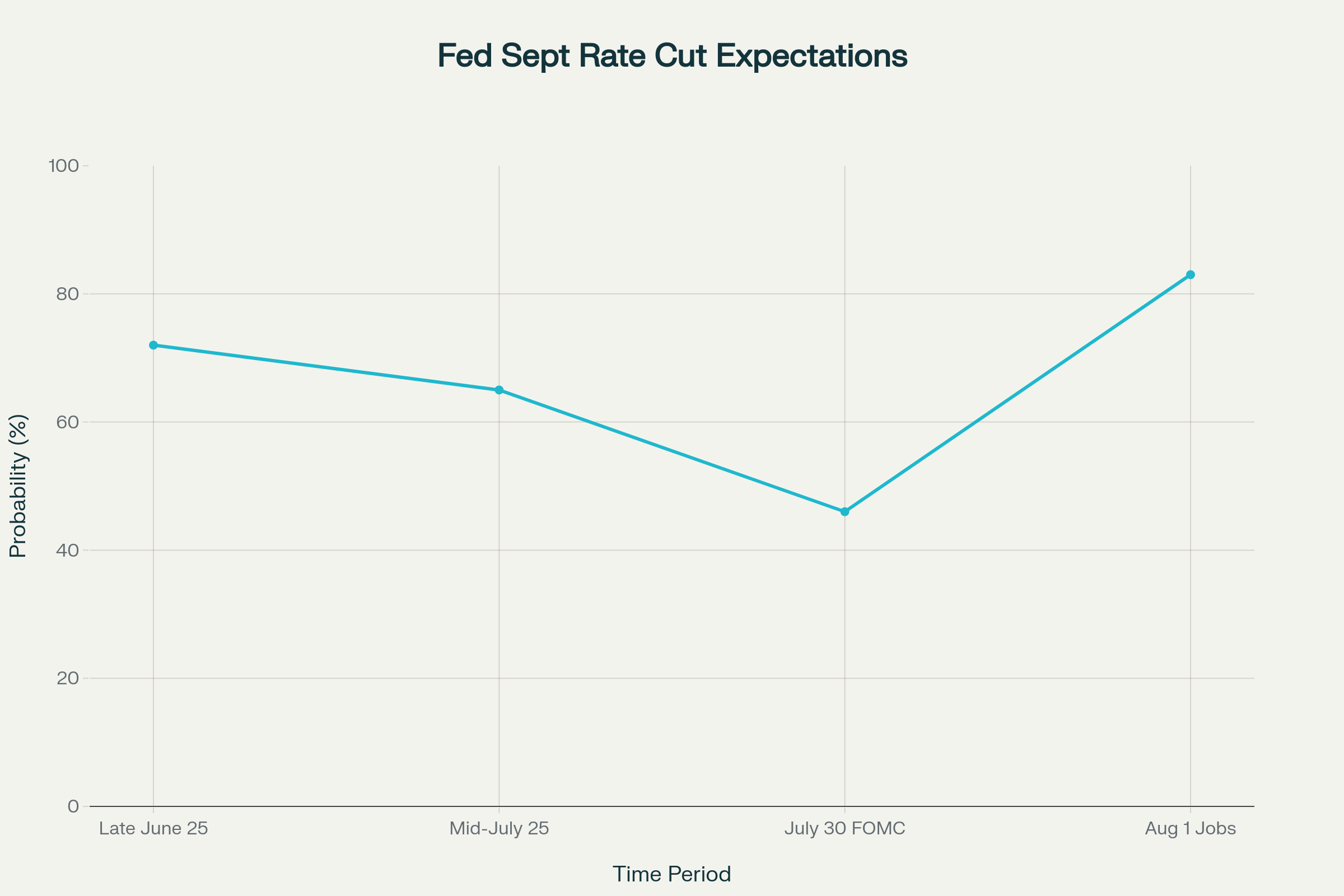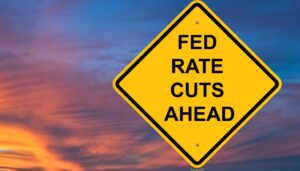It’s an exciting day in the financial world! The Federal Reserve just announced its first interest rate cut in nearly a year, lowering its key benchmark rate by a quarter of a percentage point. This move, bringing the target federal funds rate down to a range of 4.00%-4.25%, has everyone talking about what comes next for interest rates in the U.S. As we digest this significant decision, it’s crucial to understand why it happened, what the Fed thinks will happen, and how this could ripple through our economy.
Right now, the consensus is that this is the start of a gradual easing cycle, but the exact pace and extent depend heavily on how the economy performs in the coming months.
Interest Rate Predictions Post Federal Reserve's First Rate Cut in 2025
What Just Happened? The Fed’s Decision and Why
Let’s rewind a bit to understand the context. For a while now, the Federal Reserve has been holding interest rates relatively high. Remember back in early 2022 when they started hiking rates aggressively? That was all about taming inflation that had gotten pretty out of hand after the pandemic. Think prices for pretty much everything soaring. They kept rates high, peaking around 4.25%-4.50%, to cool down the economy and bring inflation back under control.
But lately, the economic picture has changed. We’ve seen signs that the economy isn't as red-hot as before. Growth has slowed down a bit, job gains haven’t been as strong, and the unemployment rate has crept up to 4.3%. At the same time, inflation, while not at its peak, is still a little higher than the Fed’s target of 2%. You might have noticed new tariffs on goods, which have also played a role in keeping prices up.
Fed Chair Jerome Powell explained this cut as a “risk management” move. Essentially, the Fed is trying to balance two things: making sure people keep their jobs and the economy doesn’t fall into a deep slump, while also keeping an eye on inflation. He mentioned that the risks to employment have increased, which points to why they decided to act now. It's like they're trying to get ahead of any potential slowdown. The decision wasn't completely unanimous, though. One Fed official thought they should have cut rates even more, by half a percentage point.
Looking Ahead: What the ‘Dot Plot' Tells Us About Future Rates
Now for the big question: what happens next? The Federal Reserve releases something called the Summary of Economic Projections (SEP), and within that is a chart called the “dot plot.” This is where individual Fed officials mark where they think interest rates will be in the future. It's not a strict plan, but it gives us a good idea of their general thinking.
Based on the latest dot plot, the Fed is signaling that they expect to cut interest rates two more times by the end of 2025. If this happens, the federal funds rate could end up somewhere around 3.50%-3.75%. This means we're likely looking at another two quarter-point cuts, possibly at their October and December meetings, though this is all really dependent on the incoming economic data.
Beyond 2025, their projections suggest that rates will continue to gradually decrease. They see rates settling around 3.4% by the end of 2026 and then down to 3.1% in 2027. Eventually, they think rates will hover around 3.0%, which they consider the “longer-run neutral rate” – a rate that neither stimulates nor slows down the economy too much.
I’ve put together the Fed’s general economic outlook in a simple table to give you a clearer picture:
| Economic Indicator | 2025 Projection | 2026 Projection | 2027 Projection |
|---|---|---|---|
| GDP Growth (%) | 1.6 | 1.8 | 1.9 |
| Unemployment (%) | 4.5 | 4.4 | 4.3 |
| Inflation (PCE) (%) | 3.0 | 2.6 | 2.1 |
| Federal Funds Rate (%) | 3.6 | 3.4 | 3.1 |
It’s really important to remember what Chair Powell stressed: this is not a set-in-stone plan. If the economy throws us a curveball – maybe inflation stays stubbornly high, or the job market weakens more than expected – they could change their minds about how many times or how much they cut rates.
How the Market is Reacting and What It Means for You
When the Fed makes a move like this, the markets usually react pretty quickly. In this case, the stock market saw a decent, though not huge, rally. Think of it this way: when borrowing money becomes cheaper, businesses can more easily invest and grow. This often makes investors feel more optimistic about stocks, especially companies that do well when the economy picks up, like banks and homebuilders.
Bond yields also dipped a bit. Bond yields and interest rates generally move in opposite directions. As the Fed signals lower rates, the returns you can get on bonds tend to go down. Gold prices, often seen as a safe haven during uncertain economic times or when inflation is a concern, also went up.
For us as consumers and business owners, what does this mean?
- Borrowing Costs: Over time, we might see a gradual easing of interest rates on things like mortgages, car loans, and credit cards. However, because the market had largely expected this rate cut, the immediate relief might not be dramatic. Banks often price their loans based on what they expect the Fed to do, so much of this move might have already been “priced in.”
- Housing Market: Lower mortgage rates can make buying a home more affordable, which could encourage more people to enter the market and help a somewhat sluggish housing sector. But again, the effect might be modest at first.
- Savings: On the flip side, if you have money in savings accounts or certificates of deposit (CDs), you might see the interest you earn start to go down as rates decrease.
Diving Deeper: Expert Opinions and Historical Context
As someone who's been following financial markets and economic trends for a while, I see this move as a necessary adjustment. The Fed did a good job of getting inflation under control, but now they need to be careful not to overtighten and cause a recession.
Many experts are echoing this sentiment. Analysts from places like Reuters and Investopedia agree that the Fed is likely to continue with gradual rate cuts, but they also caution about those upside inflation risks, particularly from those tariffs we've been hearing about. J.P. Morgan, for instance, is predicting rates will be in the 3.25%-3.50% range by early 2026.
Looking back at history can be helpful here. We’ve seen cycles where the Fed has cut rates to support the economy. For example, the cuts that started in 2024 were followed by a significant rise in Bitcoin and boosts in the stock market. Over the longer term, the average cutting cycle over the last 50 years has lasted about 26 months and seen rates come down by around 6.35 percentage points. Usually, the stock and housing markets tend to perform better about a year after these cutting cycles begin. This current move feels a bit like an “insurance policy” from the Fed, trying to keep the economy on a stable path without triggering a downturn.
The Curveballs: Risks and Uncertainties Ahead
Despite the Fed’s careful projections, there are definitely some risks and uncertainties we need to keep an eye on.
- Persistent Inflation: Those tariffs on imported goods could have a longer-lasting effect on prices than the Fed initially anticipates. While Chair Powell described them as a potentially temporary shift, if they cause sustained higher prices, it could make it harder for the Fed to cut rates as much as they’d like.
- Global Events: Geopolitical tensions and any slowdowns in other major economies around the world could also impact the U.S. economy and, in turn, the Fed’s decisions.
- U.S. Policy and Elections: Domestic policy changes and the upcoming election cycle can also introduce unpredictability.
- Labor Market Weakness: If the unemployment rate were to rise significantly faster than projected, the Fed might feel compelled to cut rates more aggressively to support jobs. Conversely, if inflation were to unexpectedly heat up, they might pause these rate cuts altogether.
It’s this constant back-and-forth, this balancing act, that makes my job as an observer of the economy so fascinating. The Fed made a move today based on the information they have, but as Chairman Powell himself said, they stand ready to adjust their plans if new risks emerge.
The Bottom Line: What to Expect After Today's Rate Cut
So, to wrap things up: the Federal Reserve’s decision to cut interest rates by 25 basis points is a clear signal that they are shifting their focus towards supporting employment and economic growth, while still keeping a keen eye on inflation. The projections suggest a gradual path of further rate cuts through 2025 and 2027, aiming to bring rates back to a more neutral stance.
This doesn’t mean instant massive changes for everyone. The effects will likely be gradual. For consumers and businesses, it’s a positive development that could lead to lower borrowing costs over time, but it’s important to stay informed about incoming economic data. Inflation numbers, job reports, and geopolitical developments will all play a role in shaping the Fed's next moves. It’s a dynamic situation, and while today’s cut offers a sense of direction, the exact journey ahead is still being written by the economic data.
Position Your Portfolio Ahead of the Fed’s Next Move
The Federal Reserve’s interest rate decisions could shape real estate returns through the rest of 2025. Whether or not a rate cut happens, smart investors are acting now.
Norada Real Estate helps you secure cash-flowing properties in stable markets—shielding your investments from volatility and interest rate swings.
HOT NEW LISTINGS JUST ADDED!
Talk to a Norada investment counselor today (No Obligation):
(800) 611-3060
Recommended Read:
- Federal Reserve Cuts Interest Rate by 0.25%: Two More Cuts Expected in 2025
- Fed Holds Interest Rates Steady for the Fifth Time in 2025
- Fed Projects Two Interest Rate Cuts Later in 2025
- Interest Rate Predictions for the Next 3 Years: 2025, 2026, 2027
- When is Fed's Next Meeting on Interest Rate Decision in 2025?
- Interest Rate Predictions for the Next 10 Years: 2025-2035
- Will the Bond Market Panic Keep Interest Rates High in 2025?
- Interest Rate Predictions for 2025 by JP Morgan Strategists
- Interest Rate Predictions for Next 2 Years: Expert Forecast
- Fed Holds Interest Rates But Lowers Economic Forecast for 2025
- Fed Indicates No Rush to Cut Interest Rates as Policy Shifts Loom in 2025
- Fed Funds Rate Forecast 2025-2026: What to Expect?
- Interest Rate Predictions for 2025 and 2026 by NAR Chief
- Market Reactions: How Investors Should Prepare for Interest Rate Cut
- Impact of Interest Rate Cut on Mortgages, Car Loans, and Your Wallet
